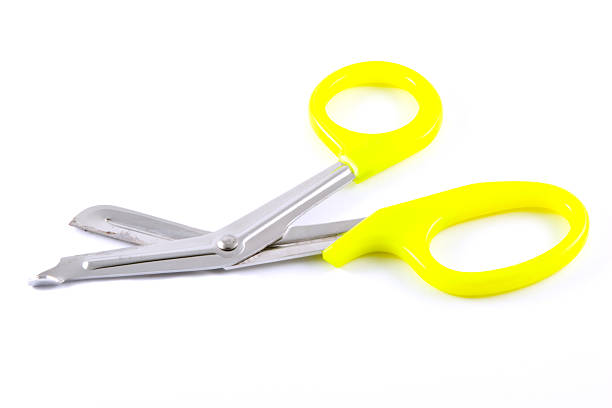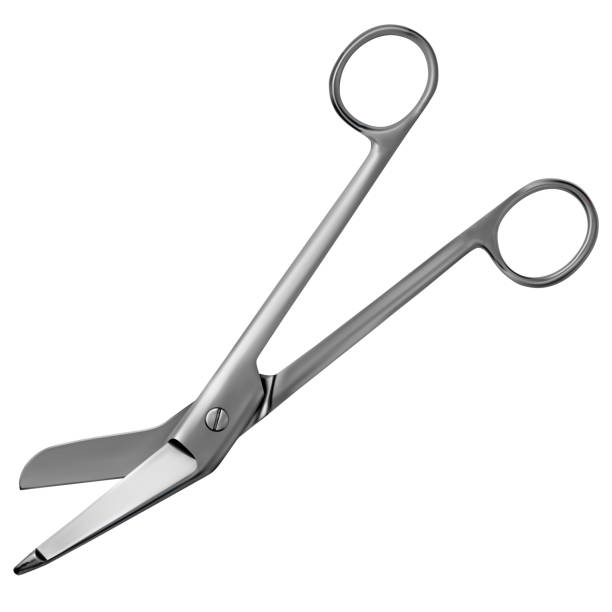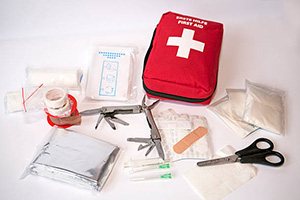When it comes to assembling a well-rounded medical kit, bandage scissors are a must-have tool. These specially designed scissors are not just any ordinary cutting instrument; they are essential for safely and efficiently cutting bandages, dressings, and even clothing in emergency situations. However, not all bandage scissors are created equal. Choosing the right pair and customizing them to suit your needs can make a significant difference in your ability to provide effective care. In this article, we’ll guide you through the process of selecting and customizing the perfect bandage scissors for your medical kit.
Bandage scissors are uniquely designed with safety in mind. They typically feature a blunt tip on one blade, which helps prevent injury to the patient while cutting near the skin. The angled design allows for easy cutting of materials while keeping the scissors close to the surface being cut. Whether you're a healthcare professional, a first responder, or someone preparing a home first aid kit, having the right bandage scissors can be crucial in emergencies.
Before diving into customization, it’s essential to understand the different types of bandage scissors available and their specific uses. Here are the most common types:

Description: Trauma shears are robust, heavy-duty scissors designed to cut through tough materials like fabric, leather, and even seat belts. They are commonly used in emergency situations where quick access to wounds is necessary.
Uses: These shears are ideal for first responders and emergency medical technicians (EMTs) who need to quickly remove clothing or bandages from an injured person.
Pros:
Cons:

Description: Lister bandage scissors are named after the British surgeon Joseph Lister. They feature a straight or slightly curved blade with a blunt tip, designed specifically for cutting bandages and dressings without damaging the skin.
Uses: These scissors are commonly used in hospitals, clinics, and first aid kits for routine dressing changes.
Pros:
Cons:

Description: Utility scissors are a versatile type of bandage scissors that can be used for a variety of cutting tasks. They often have serrated edges to help grip the material being cut.
Uses: Utility scissors are perfect for general-purpose cutting in medical kits, including cutting tape, gauze, and bandages.
Pros:
Cons:
When selecting the right bandage scissors for your medical kit, consider the following factors:
Think about what you’ll primarily be using the scissors for. If your medical kit is for home use, Lister bandage scissors or utility scissors may be sufficient. However, if you’re building a kit for emergency situations or professional use, trauma shears might be a better choice.
The size and weight of the scissors are crucial, especially if you’ll be carrying your medical kit on the go. Lighter, more compact scissors are easier to transport but may not be as durable as larger, heavier options.
High-quality stainless steel is the standard material for bandage scissors, offering durability and resistance to rust and corrosion. Some scissors also come with titanium coating for extra strength and longevity.
Safety is paramount when using bandage scissors. Look for features like blunt tips and angled blades, which help prevent accidental injury when cutting near the skin.
Since bandage scissors will come into contact with bodily fluids and potentially contaminated materials, it’s essential that they are easy to clean and sterilize. Stainless steel is ideal for this purpose, as it can withstand repeated cleaning and disinfection.
Once you’ve selected the right type of bandage scissors, you might consider customizing them to better suit your needs. Here’s how you can personalize your scissors:
If you have multiple pairs of scissors in your medical kit or if you work in a setting where different tools are used for different tasks, color coding can be incredibly helpful. Many bandage scissors are available in various colors, or you can add colored grips or tape to the handles to distinguish them.
Engraving your bandage scissors with your name or initials is a great way to personalize them and prevent loss or mix-ups, especially in a busy medical environment.
If you find that the standard grip on your scissors isn’t comfortable, consider adding cushioned grips or adhesive grip tape to improve handling and reduce hand fatigue during use.
Some manufacturers offer the option to customize the blade with serrations or other modifications to improve cutting performance. This can be particularly useful if you have specific materials you frequently need to cut.
To ensure your bandage scissors remain in top condition, proper maintenance is key:
After each use, clean your scissors with soap and water, by disinfection with alcohol or another suitable disinfectant. This helps prevent the spread of infection and keeps the scissors in good working order.
Over time, the blades on your scissors may become dull. Regular sharpening will keep them effective. You can either sharpen them yourself with a sharpening stone or take them to a professional.
Store your bandage scissors in a protective case or sheath to prevent damage to the blades and to keep them clean. This also ensures that they are easy to find when needed.
Choosing the right bandage scissors for your medical kit is an important decision that can impact your ability to provide effective care in an emergency. By considering the type of scissors, their intended use, and customization options, you can ensure that you have the right tool for the job. Whether you’re a healthcare professional or someone preparing for emergencies at home, well-chosen and customized bandage scissors are a valuable addition to any medical kit. With proper care and maintenance, they will serve you well for years to come.